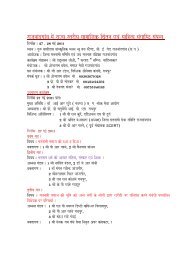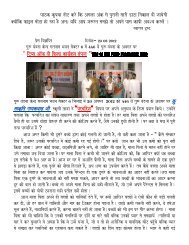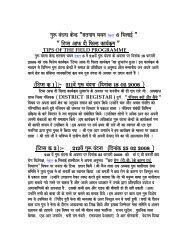Revolution and Counter-Revolution in Ancient India - Satnami.com
Revolution and Counter-Revolution in Ancient India - Satnami.com
Revolution and Counter-Revolution in Ancient India - Satnami.com
You also want an ePaper? Increase the reach of your titles
YUMPU automatically turns print PDFs into web optimized ePapers that Google loves.
As such the follow<strong>in</strong>g chapters are <strong>in</strong>cluded under this title.<br />
1. <strong>Ancient</strong> <strong>India</strong> on Exhumation<br />
2. The <strong>Ancient</strong> Regime—The State of the Aryan Society<br />
3. A Sunken Priesthood<br />
4. Reformers <strong>and</strong> Their Fate<br />
5. The Decl<strong>in</strong>e <strong>and</strong> Fall of Buddhism<br />
6. The Literature of Brahm<strong>in</strong>ism<br />
7. Triumph of Brahm<strong>in</strong>ism<br />
8. The Morals of the House—Manusmruti or the Gospel of <strong>Counter</strong>-<strong>Revolution</strong><br />
9. Philosophic Defence of <strong>Counter</strong>-<strong>Revolution</strong> (Krishna <strong>and</strong> his Gita)<br />
10. Analysis of Virat Parva <strong>and</strong> Uddyog Parva<br />
11. Brahm<strong>in</strong>s V/s Kshatriyas<br />
12. The Shudras <strong>and</strong> the <strong>Counter</strong>-<strong>Revolution</strong><br />
13. The Women <strong>and</strong> the <strong>Counter</strong>-<strong>Revolution</strong><br />
The readers may <strong>com</strong>pare these chapters with the proposed plan given <strong>in</strong> the<br />
last chapters of Schemes.—Editors<br />
________________________________________________________________<br />
__________________<br />
CHAPTER 1<br />
<strong>Ancient</strong> <strong>India</strong> on Exhumation<br />
There are two typed copies of this Chapter. Both of them conta<strong>in</strong> additions <strong>and</strong><br />
corrections <strong>in</strong> the h<strong>and</strong>writ<strong>in</strong>g of Dr. Babasaheb Ambedkar. After consideration,<br />
we decided that the latter version should be <strong>in</strong>cluded here. This essay,<br />
consist<strong>in</strong>g of three pages only, seems to be an <strong>in</strong>troduction to a larger subject<br />
Dr. Ambedkar probably had <strong>in</strong> his m<strong>in</strong>d.—Editors.<br />
Much of the ancient history of <strong>India</strong> is no history at all. Not that ancient <strong>India</strong><br />
has no history. It has plenty of it. But it has lost its character. It has been made<br />
mythology to amuse women <strong>and</strong> children. This seems to have been done<br />
deliberately by the Brahm<strong>in</strong>ical writers. Take the word Deva. What does it<br />
mean? Is the word Jana Vishesh represent<strong>in</strong>g a member of the human family?<br />
It is made to appear superhuman agency. By this the pith of history conta<strong>in</strong>ed <strong>in</strong><br />
it is squeezed out.<br />
Along with the word Deva occur the names of Yaksha, Gana,<br />
G<strong>and</strong>harva, K<strong>in</strong>nars. Who were they? The impression one gets on read<strong>in</strong>g<br />
the Mahabharat <strong>and</strong>Ramayan is that they are imag<strong>in</strong>ary be<strong>in</strong>gs who filled the<br />
horizon but did not exist.





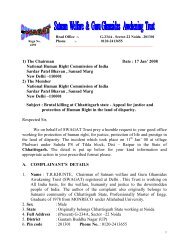
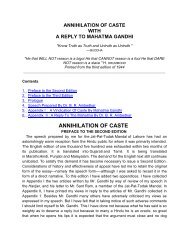


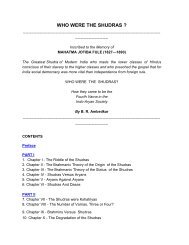

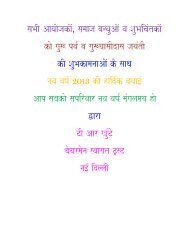
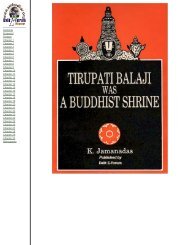
![saaQa satnaamaI saaQa satnaamaI ]%tr Baart ka mah%vapUNa ...](https://img.yumpu.com/5897453/1/190x245/saaqa-satnaamai-saaqa-satnaamai-tr-baart-ka-mahvapuna-.jpg?quality=85)
